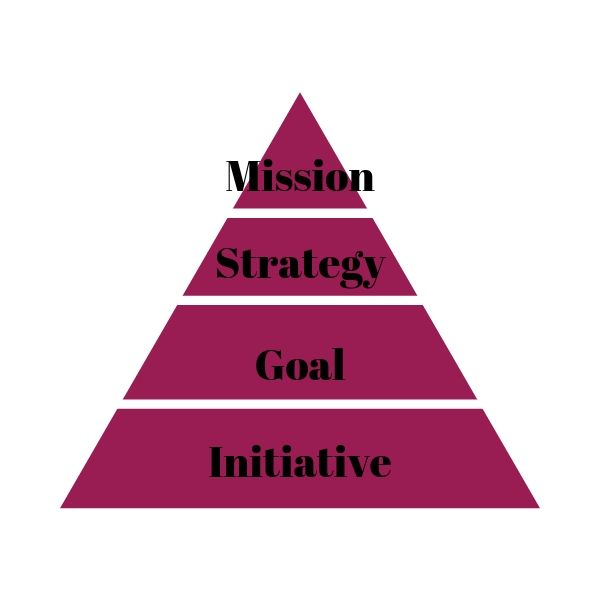10 tips to help you prioritize your long list of initiatives….. and get everyone in agreement along the way
BY LORI SMITH
Springtime is typically filled with nightly visits to the baseball field for me as I am the mother of two boys. This year, I have been working on the launch of my new consulting business and balancing business activities with three baseball teams isn’t an easy thing to do. So you can imagine how happy I was (secretly of course) on Mother’s Day when the morning game was cancelled due to rain! I could finally take a deep breath and spend some time prioritizing my workload for the upcoming week.
Prioritization is something almost all professionals struggle with on a daily basis. With more to do and less people to do it, it isn’t uncommon to feel a bit overwhelmed. Prioritizing our work can feel even more daunting when you have responsibility over a team of people or department. Imagine how your team feels. Are they spinning their wheels and feeling overwhelmed too?
The prioritization of initiatives can be even more difficult. We often feel like we are “boiling the ocean” and we tend to use terminology that all run into each other – initiative, goal, strategic plan – I do it myself all the time. More importantly, we assume our team members know what differentiates each of these terms AND how they are defined for our specific businesses. I bet if you ask three people what the top three initiatives are for your organization, you will get three different answers!
So how can you GET ORGANIZED, FOCUSED and have EVERYONE ON THE SAME PAGE around what initiatives they should be working on and which ones they should stop?
Here are 10 tips to get you started.
1. UNDERSTAND THE TERMINOLOGY
Simply stated, when you establish initiatives, you are specifying the work that needs to be accomplished in order to achieve your goals. Your goals are what it takes to deliver against your larger strategy and your strategy is what drives your company mission. Help your team understand the difference between these terms. Work together and begin gathering your information and data starting from top to bottom.

2. DEFINE SUCCESS
One of the first steps in initiative prioritization is knowing what success looks like for your company. You can do this by defining your top 3 to 5 “critical success factors.” Critical success factors (CSFs) are those few things that must go well to ensure success for a business. They represent managerial or enterprise areas that must be given special and continual attention to bring about high performance. CSFs include issues vital to an organization’s current operating activities and to its future success.
3. CREATE A COMPREHENSIVE LIST OF ALL INITIATIVES
Take the time to meet with each of your team members to inventory the many initiatives that are being worked on across the organization. There’s a good chance this list doesn’t exist or it is dispersed in many places. Make sure the list of initiatives does not include daily tasks. An initiative typically requires resources beyond your standing operating budgets and team members from more than one business function.
4. ANALYSIS, ANALYSIS, ANALYSIS
Up front assessment and analytics are critical to good decision making. Don’t be afraid of the analysis. You’ve taken a lot of time gathering your list of initiatives and defining your CSFs – now analyze them against each other.
I suggest breaking the analysis into two parts. First you need to identify how important each of your CSFs are in comparison to your overarching company strategy and mission. Rate each initiative against your CSFs. Next, consider the impact each initiative will have to your financials (i.e. drain on cash, time, increase to revenue, return on investment). The combination of these two factors will help you rank the importance of your initiatives.
5. IT’S OK TO NOT HAVE A COMPLETE SET OF DATA AND INFORMATION
We all know that it is very common to make decisions in our businesses making use of the limited information we have available to us. You may not have the time or ability to gather every initiative being worked on in your organization. You may not have all of the financial data to consider the financial impact or return on investment of every initiative. The key is to take the information you have available and do your best to make informed decisions.
6. BE THOUGHTFUL
I always challenge team members when they create reports. We spend so much time gathering information….but it’s what you do with that information that is important. Compiling information is the first step to your successful prioritization. Now, review the results of your initiative rankings and ask yourself the following questions:
- Are your associates focusing on initiatives that align with your company mission and goals?
- Are projects with high costs and low impact taking up too much time?
- Which initiatives should you “take a break” from or “STOP”?
- Which initiatives do you need to accelerate?
7. BE INCLUSIVE
(Hint: This is the part where you gain alignment!) If you review your report of initiatives in a bubble, chances are you will make assumptions about where you think the group should be focused without getting important intel from other parts of your organization. Review the information with your team. More importantly, review the information with peers. By thinking things through horizontally (with other departments and peers) and vertically (with all levels within your team), you are not only allowing multiple stakeholders to share their view points, you are building consensus around what matters most. The team will feel that they are a part of the decision making and their opinions matter – because they do matter.
8. START, STOP, CONTINUE
Take the output of all of your hard work and identify what initiatives you need to start working on that have been ignored, stop because they don’t provide a solid return on investment or continue because they are important to your success!
9. GO SLOW TO GO FAST
There are a ton of initiatives being worked on but only so many resources to support them. Taking the time to properly analyze your initiatives is not an easy task, and it can take a great deal of time, but it is necessary to make sure you maximize your most important assets: people, time and money. The process I’ve outline for you is something that will not happen overnight. Investing the time to go slowly through this process is critical to allow your team to run toward their growth initiatives quickly!
10. KNOW WHEN TO ASK FOR HELP
Prioritization isn’t an easy task and don’t anticipate that this process is something you can do on your own. Ask for help from team members, other departments or seek the help of an external consultant. Having a fresh set of eyes work through your initiative prioritization exercise will allow you to be more analytical and thoughtful in the decisions you make to help drive your business to success.
Have you considered initiative prioritization in your organization? Do your teams feel like they are boiling the ocean and don’t know where to focus? Are you unsure how to determine the financial impact of your initiatives? My Initiative Management and Prioritization Services can help! Reach out to me to schedule your free strategy call or visit my website for more information on my services.



